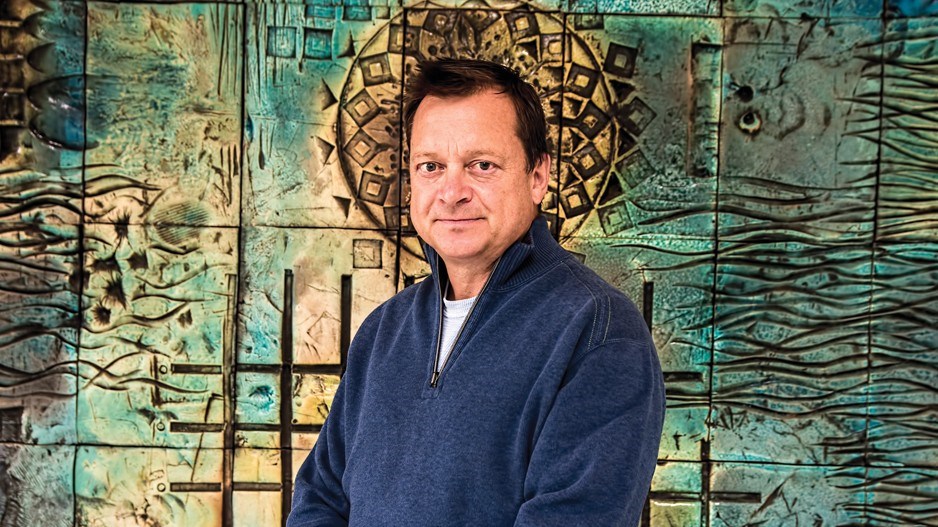The tiny Yukon town of Faro, a four-hour drive northwest of Whitehorse, would never have existed were it not for the nearby lead-zinc mine of the same name, which is said to have been the largest in the world at the time it was built in the late 1960s.
At its peak the town was home to 2,100 people, with the Faro mine accounting for 35% of Yukon’s GDP.
But after the mine’s owners went bankrupt, the mine shut down, the town’s population dwindled to 420 people and the federal government was left with what it described as “one of the most complex abandoned mine cleanup projects in Canada.”
To date, it has cost the Canadian government an estimated $500 million in environmental remediation and mine site care and maintenance.
But the Faro mine district is far from exhausted of valuable metals. The region may still host a wealth of lead, zinc, silver and gold, not to mention more than $100 million worth of mining and public infrastructure, including a small airport, so the potential to restart the mine has always been there.
Now that First Nations in the area are on board with the idea of restarting the mine under a new co-ownership agreement, B.C. serial entrepreneur Don McInnes has helped put together a consortium of investors and a plan to acquire the land and restart the Faro mine.
The consortium – Tse Zul Development Corp. – includes McInnes’ company, Broden Mining, Vancouver-headquartered Strategic Metals Inc. (TSX-V:SMD) and the Ross River Dena Council.
McInnes has a long track record of financing successful mining and renewable energy projects. A partner at Oxygen Capital Corp., McInnes founded Plutonic Power, a B.C.-based renewable energy company that eventually became Alterra Power, which was sold to Innergex Renewable Energy (TSX:INE) in 2018 for $1.1 billion.
“When the last operator went bankrupt, it wasn’t because the mine wasn’t doing well, it was because they also owned the Westray coal mine in Nova Scotia, which blew up, and that bankrupted the company,” McInnes said.
The Faro mine complex has two main historic open-pit operations 15 kilometres apart. One of the pits is exhausted and is not part of the land package the consortium plans to buy. It is the Grum deposit in the southeast that the consortium is focused on.
The federal government would continue to be responsible for the environmental remediation of the exhausted pit. The consortium would assume the liabilities of the area around the Grum deposit, generally known as the Vangorda Lands.
“When we close – which hopefully will be this fall – we are going to be responsible for cleaning up our portion of the project, should we make an investment decision,” McInnes said.
“This is an economic arrangement between Canada and the Ross River Nation, and we’re kind of coming in behind Ross River as their mining partner, bringing them the financial and technical capacity. This is not a consult-and-accommodate opportunity. They are partners in acquiring it from the government.”
The consortium would need to rebuild a processing mill. Otherwise, the area has all the necessary infrastructure in place. When the mine was built in the 1960s, the federal government spent more than $50 million building roads, bridges, power lines and a rail line to Whitehorse. The previous mine owners spent $68 million on the mine’s operations.
“The deposits on the Vangorda Lands are some of the largest and richest zinc-lead-silver prospects in Canada, and they benefit from excellent infrastructure,” said Strategic Metals CEO Doug Eaton.
Once the land is acquired, the consortium would do a prefeasibility study, and if investors decide to sanction the project, it would have to go through a new environmental assessment. McInnes expects that would take about three years.
“If everything’s positive, and the community accepts the approach, then you might be able to start construction in three or four years from now,” McInnes said.
The plan is to restart the open-pit mining operations at the existing Grum deposit, which had been mined for only a couple of years.
“We are reasonably confident – because we have 700 drill holes of data – that there’s a lot of ore left there,” McInnes said. “We are also aware of significant other showings from previous exploration activities that stretch out to the east. And we also have a project just to the north of this called the Silver Range lands, at which a 36-million-ounce silver deposit has been found.”




